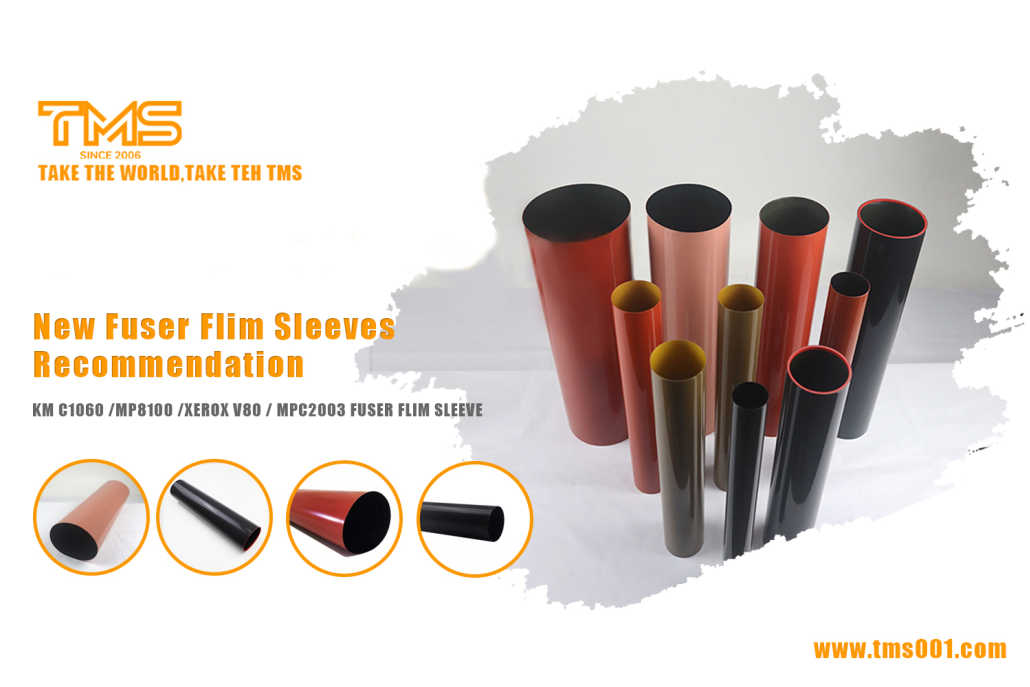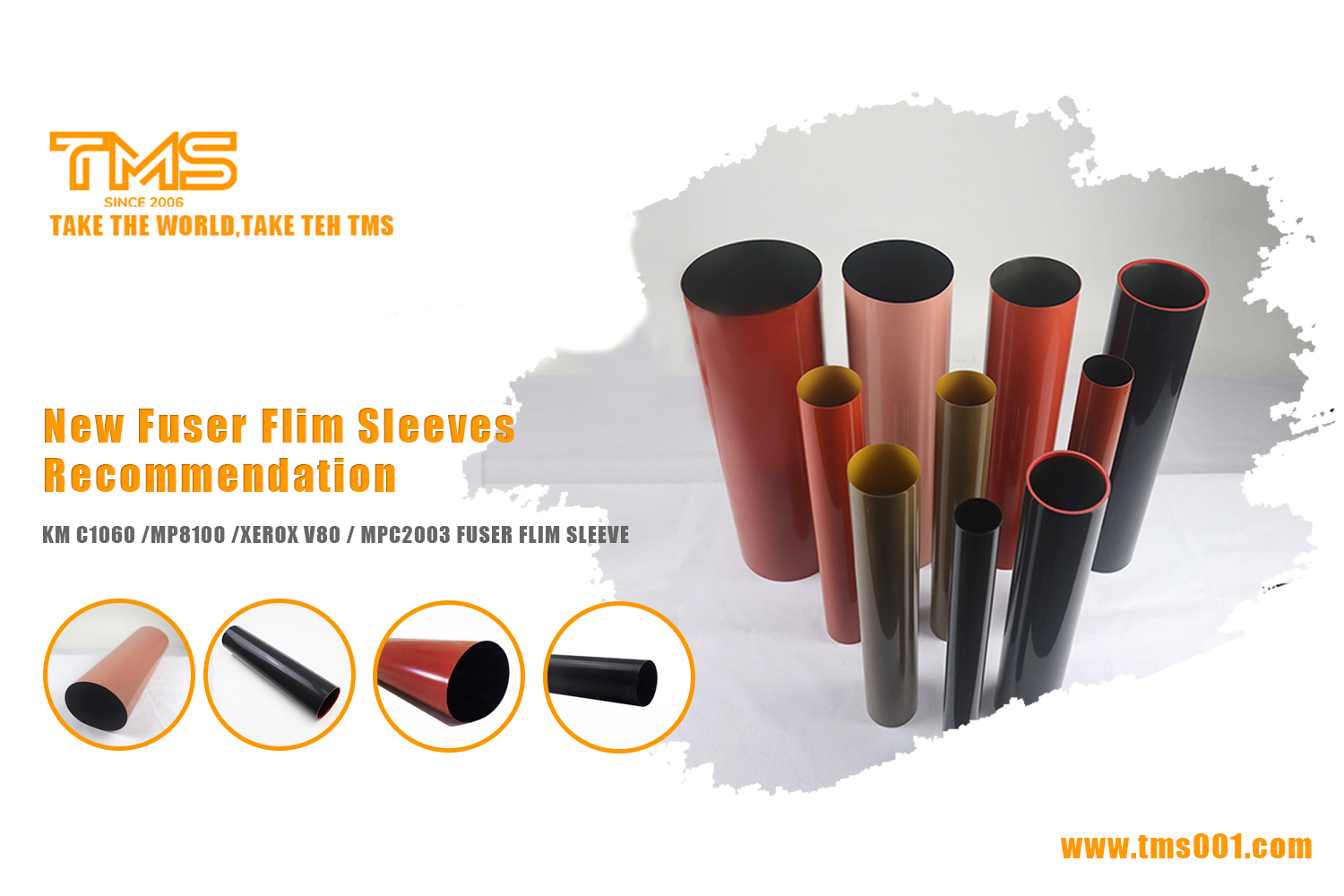Teamsung Explains What Makes a Good Fixing Film
Teamsung Explains What Makes a Good Fixing Film
 The fixing film is an important part of high-speed printers and copiers. In order to improve the working efficiency of printing equipment and to reduce printing energy consumption, the fixing film can replace the previous fixing roller and can become the first choice for greener printing in the future.
The fixing film is an important part of high-speed printers and copiers. In order to improve the working efficiency of printing equipment and to reduce printing energy consumption, the fixing film can replace the previous fixing roller and can become the first choice for greener printing in the future.
Japanese manufacturers, who are at the forefront of technology, have mainly monopolized the fixing film supply chain. However, some Chinese-based manufacturers have invested in researching and developing fixing films in recent years.
Teamsung is one such manufacturer. As an experienced supplier of domestic printers and copiers related to polymer materials, the company claims to have researched and developed a range from the monomer synthesis of raw materials to the manufacture of finished products. In so doing, it has formed a technically closed loop and obtained many patents. “The product performance is comparable to imported products and has been unanimously recognized by many users,” said a Teamsung spokesperson. “With the clarion call of the localization of printers, Teamsung’s technology bridges the gap in China.”
RT interviewed Teamsung’s senior product engineer regarding the strength of its fixing film, what makes a “good fixing film” and how buyers can make the right choice.
RT: What is a fixing film?
Teamsung: The fixing film is a special high-temperature-resistant material used for fixing when copying or printing by copiers and printers. Fixing is the process to fix the unstable and erasable toner image on paper. After the fixing component is heated, the toner is melted and penetrates the deep layer of the paper fiber, which is copied or printed.
The fixing film is multi-layered, generally three layers: conventional bottom layer-substrate layer, middle layer-thermal conduction layer, and surface coating. The substrate layer has a variety of material layers, such as stainless steel, nickel, polyimide, etc. Teamsung focuses on polyimide materials.
The fuser film is fragile and very thin. When a malfunction occurs such as a paper jam, the life of the fuser film is impacted. In some cases, it creates wear but sometimes the film is totally damaged. Therefore, the quality of the fuser film is dependent on the effectiveness and service life of the fuser.
RT:In your opinion, what is a good fixing film?
Teamsung: You can tell if a fixing film is good or not from the following six aspects:
- Thermal conductivity
If the fuser film does not conduct heat well, the toner cannot be fused securely, and partially-softened toner may turn over onto the fuser film and form lumps that may damage the heater unit. Whether the thermal conductivity is good or not depends mainly on the thermal conductivity and performance of the molding layer material.
- Isolation performance
A fusing film with good isolation can transfer the toner to the printing medium without distortion. At the same time, the fusing film must not leave toner, so that the fusing film can work well for a long time without ghosting or bottom dust. To achieve this, it directly relates to the quality of the non-stick powder layer on the surface of the fixing film, which is also the key factor for a good film.
- Flexibility
A good fixing film should have the appropriate level of flexibility. If it is too flexible, the fixing film tends to make a “crackling” noise when it is rotated on the machine, while a firm fixing film makes a very small “rustling” sound.
- Tear resistance
Tear resistance is another important mechanical performance index of the fixing film. If the fixing film has insufficient tear resistance, when the machine is not working properly, such as paper jams or foreign matter entering the fixing assembly, it will be damaged. It is prone to tearing.
- Appearance performance
The appearance performance plays a very important role in the use of the fixing film. Common appearance defects include severe uneven thickness, insufficient smoothness of the surface coating, apparent adhesion particles, serious pits, etc.
- Abrasion resistance
When other conditions are satisfied, the product has better applicability in different environments, so wear resistance is the most important factor determining the life of the fixing film.
RT: So how does your company control the quality of the fixing film in production to achieve superior product performance?
Teamsung: Our products are made from imported raw materials through scientific proportioning scheme, and are produced by advanced production technology with perfect testing. The thermal conductivity and service life have reached the OEM standard. At the same time, it has the advantages of ultra-high stability and good performance, high tear resistance, and long life. After testing and application in various environments, the compatibility turns out to be very good.
RT: Has Teamsung launched any new products recently?
Teamsung: The latest four long-life fusing film products for copiers have been well received and sought after by the market.
- MP8100 Fuser Belt/Fuser Film Sleeve: compatible with Ricoh Aficio PRO8100/ 8110/ 8120/ 8200/ 8210/ 8220
- KM C1060 Fuser Belt/Fuser Film Sleeve: compatible with KONICA MINOLTA BIZHUB C1060/ 1060L/ C1070/ 1070P
- XEROX V80 Fuser Film Sleeve: compatible with XEROX V80/ V180/ V2100/ V3100
- Ricoh MPC 2003 Fuser Film Sleeve (Metal Film): compatible with: Ricoh MPC 2003/ 2503/ 3003/ 3503/ 4503/ 5503
About Teamsung
Founded in 2006, Zhongshan Teamsung New Material Co., Ltd., has been committed to the research and development and manufacture of polymer materials. It is located in Zhongshan City, Guangdong Province with convenient transportation and complete industrial facilities. Teamsung Industrial Park covers an area of 66 acres, with a total construction area of 68,000 square meters, and has set up a polymer material research and development center. In recent years, the company has made great achievements in the research and development of polyurethane, polyimide, and silicone materials. The conductive and thermal conductive fixing films produced have obtained several patent certificates. The products are suitable for printers and copiers of many brands such as Konica, Xerox, Ricoh, Kyocera, Canon, Sharp, Toshiba, Samsung, and HP.
Related:
- Leading Blade Manufacturer Invests in Better Meeting Customer Needs
- Teamsung Launches its Patented Drum Blades
Comment:
Please leave your comments below for the story “Teamsung Explains What Makes a Good Fixing Film.”





I hope to test it , because I use only OEM